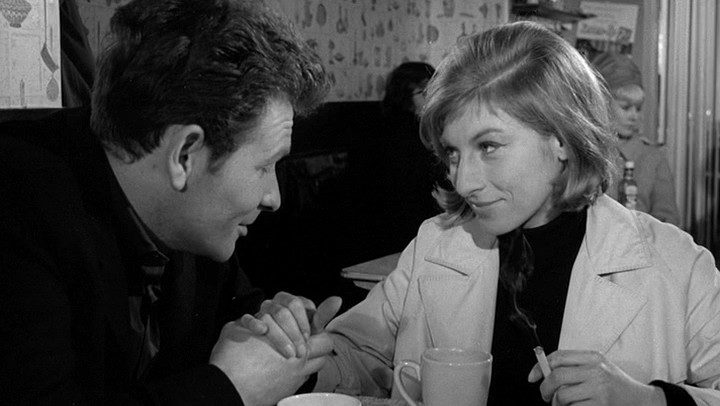Think of Dame Judi Dench, and you may picture a grand matron of British cinema, an actress strong enough to play Queen Elizabeth, Queen Victoria or M in the James Bond movies. But we might also wonder, what was Judi Dench like at the start of her career? Did she have as much presence when she was 28 as she has now at 78?
For an answer, have a look at one of her earliest roles—in Four in the Morning, a 1965 film for which she won the British Film Award for Most Promising Newcomer. Dench plays a nameless housewife who spends a sleepless night tending to her newborn baby. It’s about as unglamorous a role as one can imagine, but it gives us a fresh look at her talents. In her first scene, she speaks almost no dialogue. It’s a vivid demonstration of Dench’s abilities as a purely physical actor.
The film itself reflects the gritty social realism that defined British Cinema for the first half of the sixties, typified by the spate of dramas about angry young men frustrated with society. But Four in the Morning turns the notion of the Angry Young Man on its ear by giving as much—if not more—attention to frustrated young women, making it a special example of feminism emerging in the British New Wave. The film seems to mock the Angry Young Man concept through Judi Dench’s husband, a self-absorbed lout who doesn’t seem interested in his wife or his newborn child. There’s a great moment where Dench says nothing but just looks at her husband with an expression of both love and contempt.
The film cuts between their domestic squabble and a more mysterious rendezvous between a man and a woman, also nameless. We never learn the background of their relationship, even as they spend a morning together talking at length along the London riverfront. The bleak yet romantic landscape and the emotional uncertainty of this couple brings to mind the iconic films of Michelangelo Antonioni. The lead actress Anna Lynn even resembles Antonioni’s favorite actress, Monica Vitti. Their sexual tension and desire for escape culminate in a reckless motorboat joyride on the Thames.
Throughout the film we wonder what connects these two unhappy couples. The only clue we have are recurring shots of a dead woman being pulled out of the Thames and examined by forensic investigators. These shots of this nameless woman’s body suggest that the film itself is a kind of autopsy, depicting how two women’s dreams of love and fulfillment in modern society are put to death at four in the morning.





